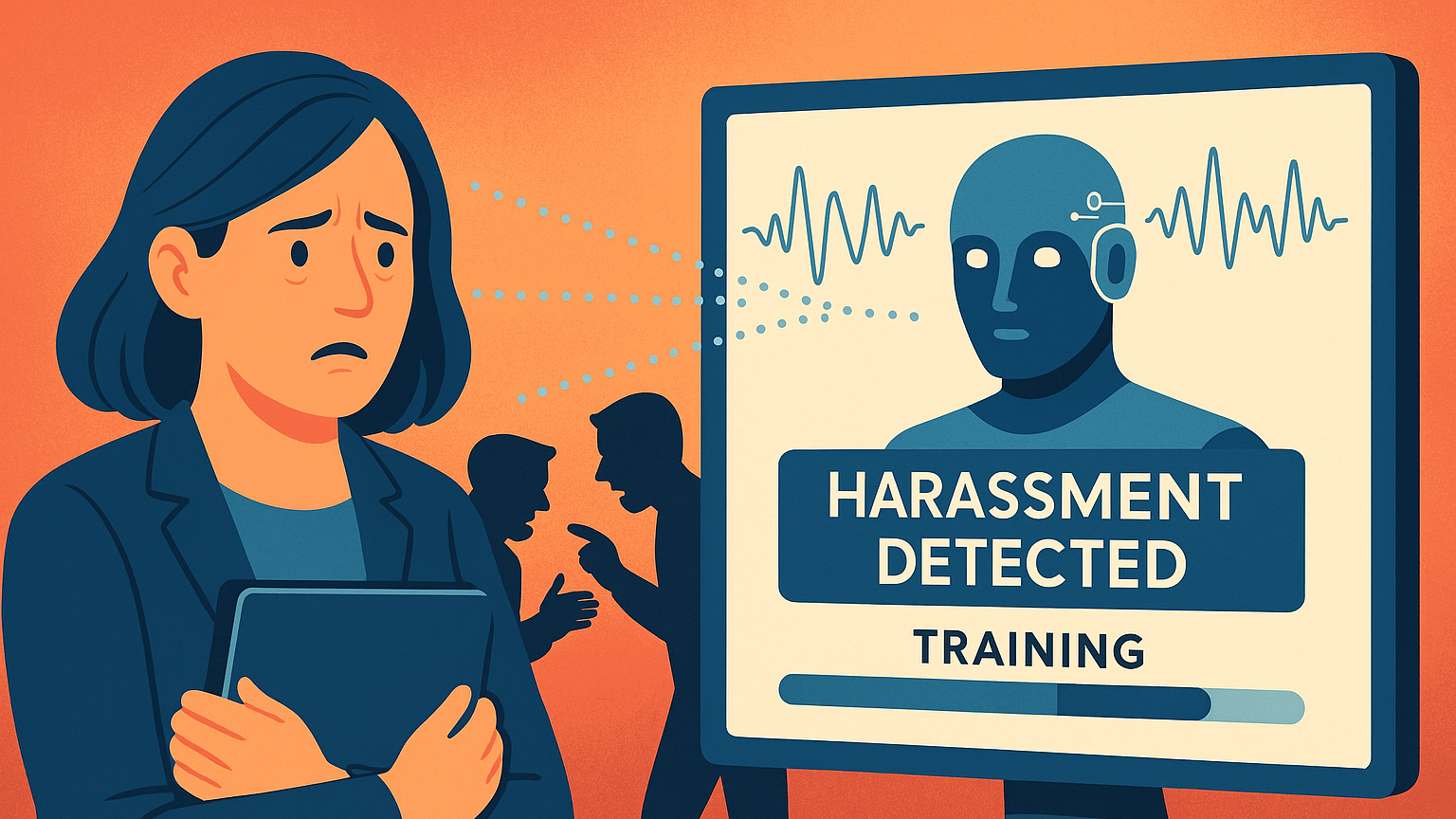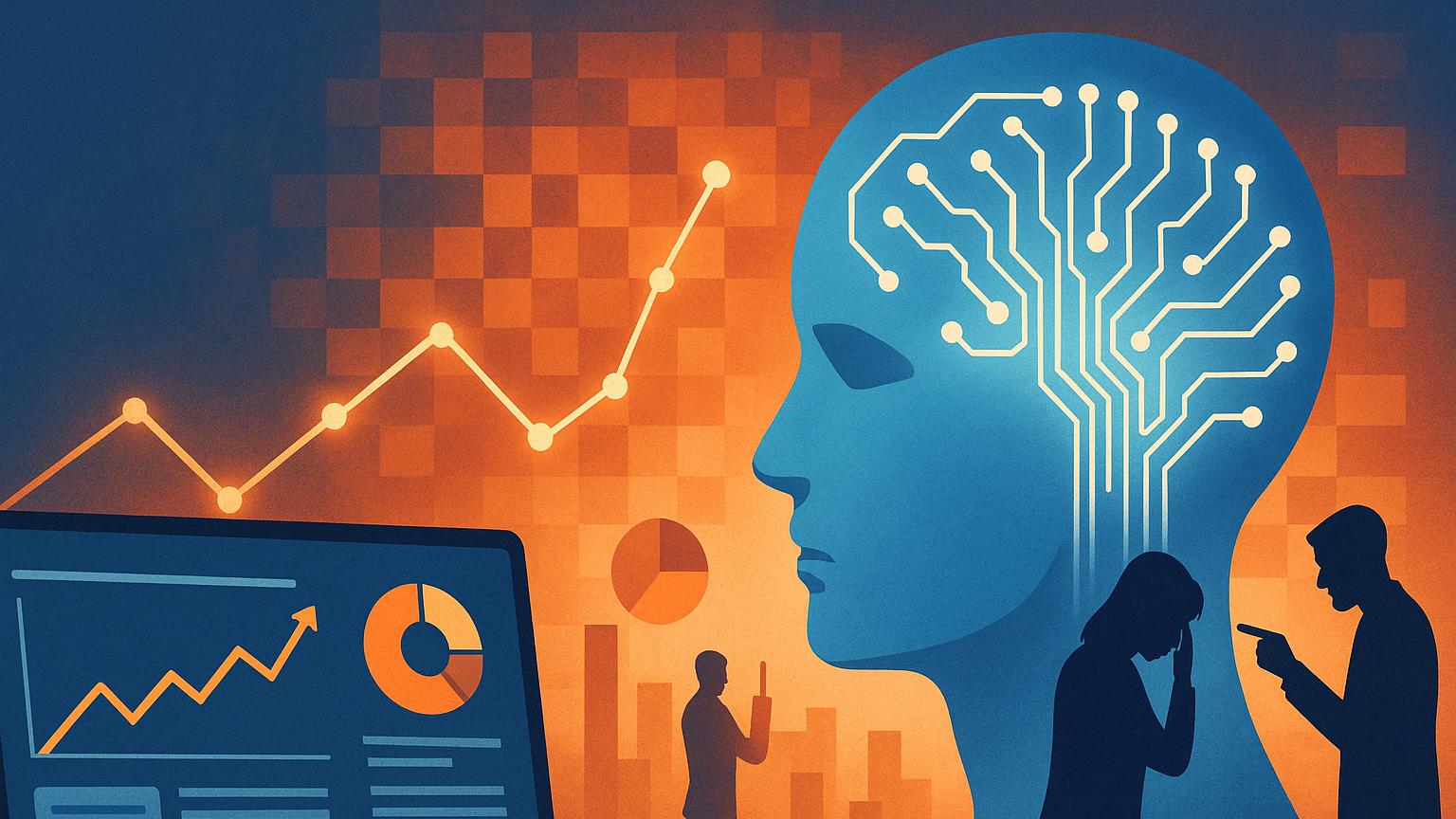
AI in Talent Management for Workplace Harassment and Discrimination Response
You’re reading this because you want practical, business-focused insight into how AI is reshaping talent management — specifically how it can help you prevent, detect, investigate, and remediate workplace harassment and discrimination. This article gives you a friendly, sector-aware guide that balances productivity gains with legal, ethical, and human-centered considerations so you can make informed decisions for your organization.
Why AI matters for harassment and discrimination response
You face pressure to respond quickly, consistently, and defensibly when allegations arise. AI can help you scale intake, surface patterns across data that humans might miss, and reduce administrative friction so investigators and HR professionals can focus on outcomes that support employees. But AI also introduces new risks — such as bias amplification, privacy concerns, and legal uncertainty — that you must manage intentionally.
How AI is changing employee relations and communication
You’re seeing AI touch almost every point of employee experience: recruitment, performance reviews, engagement surveys, and, importantly, employee relations. AI-driven tools are being used to triage complaints, summarize interviews, detect problematic patterns in communications, and deliver targeted training. That evolution changes not just the tools you use, but the workflows, roles, and competencies required in your talent team.
From reactive casework to proactive prevention
Instead of waiting for a complaint to land on someone’s desk, AI lets you detect signals early — trends in sentiment, repeated low-level incidents, anomalous messaging patterns — so you can intervene before problems escalate. This capability shifts your strategy from reactive investigation to proactive mitigation, which can reduce harm, legal exposure, and turnover.
The impact on investigator productivity and caseloads
AI lets investigators automate repetitive tasks like transcription, document retrieval, redaction, and timeline creation. That saves time and reduces human error, so you can handle a larger caseload without compromising quality. However, you should plan for human oversight to validate AI outputs and to apply the nuance that machines can miss.
Key AI capabilities for harassment and discrimination response
You’ll want to understand the core AI building blocks so you can match them to your use cases. These capabilities include natural language processing (NLP), sentiment analysis, pattern and anomaly detection, chatbots, case management automation, and predictive analytics.
Natural language processing (NLP) and text analysis
NLP helps you process large volumes of text — emails, HR tickets, chat logs, survey responses — to extract topics, entities, and intent. You can use it to identify potentially harassing language, categorize complaint types, and surface recurring names or locations tied to incidents. NLP isn’t perfect; it struggles with context, sarcasm, and cultural subtleties, so human review remains essential.

Sentiment analysis and tone detection
Sentiment analysis gauges emotional tone across communications and can flag escalations in hostility or distress. It’s useful for prioritizing urgent cases, monitoring team morale, and analyzing the impact of interventions. Be cautious: sentiment models vary in accuracy across languages and demographic groups, and they may misinterpret professional or technical language.
Pattern recognition and anomaly detection
You can use AI to spot patterns that indicate systemic problems — repeated complaints against a manager, clusters of incidents in a particular location, or sudden spikes in exit interviews mentioning discrimination. Pattern recognition helps you move from isolated incidents to organizational insights that support targeted policy change.
Conversational AI and chatbots for intake and guidance
Chatbots can provide a low-friction, confidential intake channel for employees to report concerns or ask questions. They can triage reports, gather initial facts, provide resources, and route cases to the right human investigator. Make sure chatbot interactions are transparent, opt-in, and clearly explain whether and how data will be used.
Workflow automation and case management
AI can automate routing, evidence collection reminders, redaction of sensitive data, deadline tracking, and standard communication templates. That helps you maintain a defensible audit trail and consistent processes. Ensure automation rules are transparent and allow investigators to override when necessary.
Predictive analytics and risk scoring
Predictive models can estimate the likelihood that a complaint will escalate, whether a unit is at risk of systemic discrimination, or which interventions may be most effective. Use these tools to allocate resources intelligently, but avoid using predictions as the sole basis for disciplinary action; they should inform, not replace, human judgment.

Practical use cases you can implement now
You probably want concrete examples of where AI helps most. Below are practical, business-oriented use cases that have immediate relevance for talent teams working on harassment and discrimination response.
Automated intake, triage, and routing
You can deploy AI-driven intake forms and chatbots to collect structured information, categorize complaints, and prioritize urgent cases. That reduces the time between report and action and ensures that sensitive matters get immediate attention. Always provide human contact options, and route high-risk reports to senior staff quickly.
Cross-data pattern detection
AI can correlate data across HR systems, communications platforms, and exit interviews to reveal trends. That enables you to identify repeat offenders, problematic teams, or locations where harassment is more likely to occur and to take systemic corrective measures.
Investigative assistance and evidence summarization
During investigations, AI tools can transcribe interviews, summarize long chat histories, extract relevant documents, and build timelines. That speeds up fact-finding and helps investigators focus on substantive interviews and credibility assessments.
Anonymized reporting and organizational dashboards
You can provide employees with anonymous reporting channels powered by AI and generate aggregated dashboards that show trends without exposing identities. Those dashboards support leadership decisions and can be used to justify training, policy changes, or leadership actions.
Targeted training and microlearning
By analyzing incident types and gaps in manager responses, AI can recommend tailored training modules or microlearning nudges to specific teams or individuals. This targeted approach makes training more relevant and increases the likelihood of behavior change.

Legal eDiscovery and documentation support
AI can help you locate and preserve relevant documents during legal processes, identify privileged communications, and produce defensible audit trails. You should involve legal counsel early to ensure preservation steps are compliant with applicable regulations.
Benefits and productivity gains you can expect
You want measurable returns from AI investments. When implemented responsibly, AI can increase speed, consistency, and coverage of harassment response functions and free human staff for high-value empathy-driven work.
Faster response times and better prioritization
AI helps you identify urgent cases quickly, reducing the time between reporting and intervention. Faster responses increase trust among employees and can limit the spread of harm within teams.
Consistency and fairness in process
Automation enforces consistent intake and triage workflows, which reduces arbitrary variation in how cases are handled. This consistency supports defensibility and fairness, especially in organizations with distributed HR teams.
Scalability and operational efficiency
AI lets you handle more cases without proportionally increasing headcount. It also reduces the manual burden of administrative tasks like redaction and timeline creation, enabling investigators to spend their time on substantive assessment and remedy.
Data-driven policy and prevention
Aggregated insights from AI inform policy decisions, targeted training, and structural interventions, enabling preventative action rather than one-off fixes. Over time, you can trend improvements and adjust programs with empirical backing.

Risks and limitations — what you must watch for
You’ll gain value from AI only if you manage the risks. AI can introduce bias, erode trust if misused, create legal exposure, and produce false positives or negatives that cause harm if not human-reviewed.
Algorithmic bias and amplification of inequities
AI models trained on biased historical data can perpetuate or amplify discriminatory patterns. For instance, if past investigations were biased, models may learn those biases and repeat them. You need to test models for disparate impact and adjust training data or algorithms accordingly.
False positives and false negatives
AI will sometimes flag innocuous interactions as problematic or miss subtle harassment. False positives can damage reputations and trust; false negatives leave harm unaddressed. Human-in-the-loop review and appeal mechanisms are essential.
Privacy, surveillance, and chilling effects
Employees may feel surveilled if AI continuously analyzes communications. That can chill open communication and damage morale. Be transparent about monitoring, limit analysis to legitimate business needs, and implement safeguards like anonymization and purpose limitation.
Legal admissibility and discoverability
AI-generated outputs, summaries, or automated decisions may become subject to legal discovery. Preserve audit logs, document model settings, and involve counsel to manage evidentiary risk. Don’t rely on AI output as the sole source of truth during legal proceedings.
Over-reliance and skill degradation
If you over-automate, your team may lose critical investigative skills. Use AI to augment human decision-making and ensure continuous training so your staff can validate and interpret AI outputs effectively.
Ethical design and human-centered safeguards
You’ll earn trust and reduce risk by designing AI systems around human dignity, transparency, and accountability. Ethical design principles should guide product selection, deployment, and governance.
Human-in-the-loop and escalation controls
Ensure that all high-stakes decisions — discipline, termination, remedial action — have human sign-off. AI should inform options, not dictate outcomes. Provide clear escalation paths and empower investigators to override automated recommendations.
Transparency and explainability
You should clearly explain to employees when AI is used, what data is processed, and how decisions are made. Provide accessible summaries of why a recommendation was generated and how employees can contest or request human review.
Consent, notice, and opt-out where possible
When deploying chatbots or analysis that touches employee communications, provide notice and, where feasible, options to opt out or choose alternative reporting channels. Consent supports trust and legal compliance, especially in jurisdictions with stronger data protection rules.
Fairness testing and bias mitigation
Regularly audit models for disparate impacts across gender, race, disability, and other protected classes. Use diverse training datasets, employ fairness-aware algorithms, and incorporate ongoing monitoring to detect regressions.
Legal and regulatory landscape you need to consider
You must align AI use with employment law, data protection regulations, and sector-specific requirements. Ignoring legal obligations exposes you to liability and reputational harm.
Employment law and duty to investigate
In many jurisdictions, employers have a duty to investigate harassment and discrimination allegations promptly and effectively. AI can help meet this duty but cannot replace a thorough human investigation. Document every step and ensure investigators have authority and resources.
Data protection regimes (GDPR, CCPA, etc.)
If you operate in regions governed by GDPR, CCPA, or similar laws, you must lawfully process personal data, honor subject access requests, enable data minimization, and in some cases provide explanations about automated decisions. Design systems to support these rights.
Sector-specific regulations (healthcare, finance, government)
Certain industries have additional privacy and reporting obligations. For example, healthcare has HIPAA in the U.S., and finance firms may face stricter recordkeeping and supervision. Consult legal and compliance teams to ensure sector alignment.
Unionized workforces and labor law considerations
If your workforce is unionized, you need to negotiate changes that affect monitoring, workflows, or disciplinary processes. Engaging employee representatives early reduces conflict and increases acceptance.
Data governance and privacy best practices
Good data governance protects individuals and supports defensible AI operations. You need policies for collection, storage, access, retention, and deletion of sensitive HR and communications data.
Data minimization and purpose limitation
Collect only the data you need to achieve legitimate HR objectives. Limit secondary uses and ensure processing aligns with stated purposes. Minimization reduces risk and regulatory complexity.
Secure storage, access controls, and logging
Store sensitive data in encrypted repositories, apply strict role-based access controls, and maintain tamper-evident logs. Audit access regularly and apply the principle of least privilege.
Anonymization and aggregation for analysis
When you’re doing trend analysis or dashboards, anonymize data to the extent possible. Aggregated insights reduce privacy risk while still giving you actionable information.
Retention policies and legal holds
Define retention windows aligned with legal requirements and business needs. Ensure you can implement legal holds quickly and that your AI systems preserve relevant data for investigations or litigation.

Implementing AI in your harassment response program — a roadmap
You’ll get better outcomes if you approach AI adoption methodically. Use a phased roadmap: assess needs, pilot responsibly, measure, and scale with governance and training.
1. Conduct a needs and risk assessment
Start by mapping current processes, pain points, data sources, and legal constraints. Identify where AI could add value and where it might introduce unacceptable risk. Engage legal, HR, IT, and employee representatives.
2. Define use cases and success metrics
Choose a small set of high-impact use cases for an initial pilot — for example, automated intake or transcript summarization. Define KPIs such as time-to-triage, investigator hours saved, and employee satisfaction.
3. Select vendors and technologies carefully
Evaluate vendors for security, compliance, explainability, and bias mitigation practices. Assess model training data and request independent audits when possible. Favor vendors that support on-premises or private cloud deployments if regulatory needs demand.
4. Pilot with human oversight and clear governance
Run a controlled pilot, keeping humans fully in control of decisions. Monitor outcomes closely, collect feedback from users and impacted employees, and iterate based on findings.
5. Scale with training and change management
When you scale, invest in training investigators, managers, and employees on how to interact with AI outputs. Communicate transparently about what the system does, and maintain channels for feedback and appeal.
6. Monitor, audit, and improve continuously
Maintain ongoing monitoring for fairness, accuracy, and privacy. Conduct periodic audits, keep model versions documented, and update models when your workforce or laws change.
Vendor evaluation checklist
When you evaluate AI vendors, pay attention to issues that matter for employee relations and legal defensibility. Here’s a compact checklist you can use during procurement.
- Data handling practices, encryption, and retention controls.
- Model explainability and documentation of training data.
- Bias testing results and fairness mitigation measures.
- Support for human-in-the-loop workflows and overrides.
- Audit trails, logs, and compliance certifications.
- Integration capabilities with your HRIS, communications platforms, and case management systems.
Measuring success: KPIs and dashboards you should track
You’ll want to quantify the impact of AI on your harassment response operations. Track both operational efficiency and human-centered outcomes.
Operational KPIs
Measure time-to-intake, time-to-triage, investigator hours per case, caseload throughput, and case closure times. These metrics show productivity improvements and help you allocate resources.
Outcome and quality KPIs
Track measures like employee satisfaction with the reporting process, rate of repeat incidents, the percentage of cases with recommended remedies implemented, and trends in anonymous reporting. These reveal the program’s real-world effectiveness.
Fairness and compliance KPIs
Monitor disparate outcomes across demographic groups, rate of overrides by human reviewers, and audit findings. These indicators help you detect bias or systemic failures early.
Sector-specific considerations and examples
Different industries have different sensitivities and operational constraints. Tailor your AI approach to the realities of your sector to maximize benefit and reduce risk.
Healthcare
In healthcare, privacy and patient safety are paramount. You should ensure HIPAA compliance for any system that touches patient data and prioritize confidentiality for staff reporting. AI can help detect bullying that undermines patient safety, but you must intervene fast and protect whistleblowers.
Finance
Finance firms face strict recordkeeping and supervisory obligations. Use AI to strengthen auditability and detect patterns that may correlate with discriminatory practices. In regulated environments, on-premises deployments and detailed logging are often required.
Technology
Tech companies often move fast and use modern communication tools. AI can analyze chats, code review comments, and collaboration platforms for problematic behavior. Be mindful of developers’ and engineers’ culture and ensure that surveillance doesn’t stifle innovation.
Retail and hospitality
Frontline teams in retail and hospitality have high churn and varied shift patterns. AI-driven microlearning and anonymous reporting can be especially valuable here, helping you protect hourly workers who might feel less empowered to report misconduct.
Manufacturing and field operations
In distributed operations, AI can consolidate incident reports and detect site-level patterns. Ensure data collection accommodates offline and shift-based environments and focus on rapid response mechanisms where physical safety might be at risk.
Training and upskilling for HR, managers, and investigators
You will maximize AI benefits by investing in people. Train your HR staff and investigators on how to interpret AI outputs, validate findings, and document decisions.
AI literacy for HR teams
Equip HR with knowledge about how models work, their limitations, and how to spot biased outputs. This will help them ask the right questions to vendors and to adjust processes appropriately.
Manager training for early intervention
Train managers to recognize signals flagged by AI and to take respectful, timely action. Managers should understand escalation protocols and supportive measures that prioritize employee safety and dignity.
Investigator skill development
Investigators should learn how to corroborate AI-generated summaries, interrogate timelines, and apply human judgment to nuanced credibility assessments. Reinforce documentation standards and legal considerations.
Human-centered response models: mediation, restorative justice, and support
AI can help you identify candidates for mediation, restorative justice, or other non-punitive remedies, but human facilitation is critical. Use AI to augment, not replace, empathy-driven processes.
Mediation and restorative approaches
When appropriate, AI can suggest mediation for low-to-moderate severity incidents where both parties want a facilitated conversation. Ensure mediators are trained, neutral, and that participation is voluntary.
Supportive measures and accommodations
AI can help predict needs for accommodations or supportive actions, such as reassignments or protective measures. Always discuss these options with the impacted employee and document informed consent.
Whistleblower protections and confidential reporting
AI-supported anonymous channels can protect whistleblowers, but you must ensure real confidentiality, secure data handling, and clear legal protections to encourage reporting.
Future trends to watch
You’ll see new capabilities emerge that further reshape how you manage harassment and discrimination response. Stay informed and be ready to adapt policies and governance.
Multimodal analysis
Future systems will combine text, audio, and video analysis to detect micro-expressions, tone shifts, and behavior patterns. These tools will be powerful but raise significant privacy and fairness questions.
Real-time intervention and nudges
Imagine tools that detect heated exchanges in real time and provide managers with nudges for de-escalation. That capability can prevent escalation but must be deployed with clear consent and human oversight.
Generative AI for drafting and summarization
Generative models will help draft investigation summaries, communications, and policy language. Maintain strict review processes to prevent hallucinations and to ensure legal defensibility.
Increased regulation and audits
Expect more regulatory scrutiny of AI in HR contexts. You should build auditability and explainability into systems today to stay ahead of potential rules.
Final practical recommendations and checklist
You want a concise summary of what to do next. Use this checklist as actionable guidance as you consider or scale AI solutions in harassment and discrimination response.
- Start small: pilot a single, well-scoped use case with clear metrics.
- Prioritize transparency: notify employees about AI use and options for human review.
- Keep humans central: require human sign-off for high-stakes decisions.
- Govern data: define retention, access, and anonymization policies.
- Test and audit for bias: run fairness checks and monitor disparate impacts.
- Engage stakeholders: involve legal, IT, communications, unions, and employee reps early.
- Measure outcomes: track both operational KPIs and employee experience.
- Train continuously: upskill investigators, HR, and managers on AI interactions.
- Document everything: maintain audit logs, model versions, and decision records.
Conclusion
You’re at an inflection point where AI can materially improve how you manage workplace harassment and discrimination — making processes faster, more consistent, and more proactive. But the benefits come with responsibilities: you must design systems that respect privacy, avoid replicating bias, and keep humans firmly in control. If you approach adoption methodically — with pilots, governance, training, and continuous monitoring — AI can be a powerful tool in creating safer and fairer workplaces.
